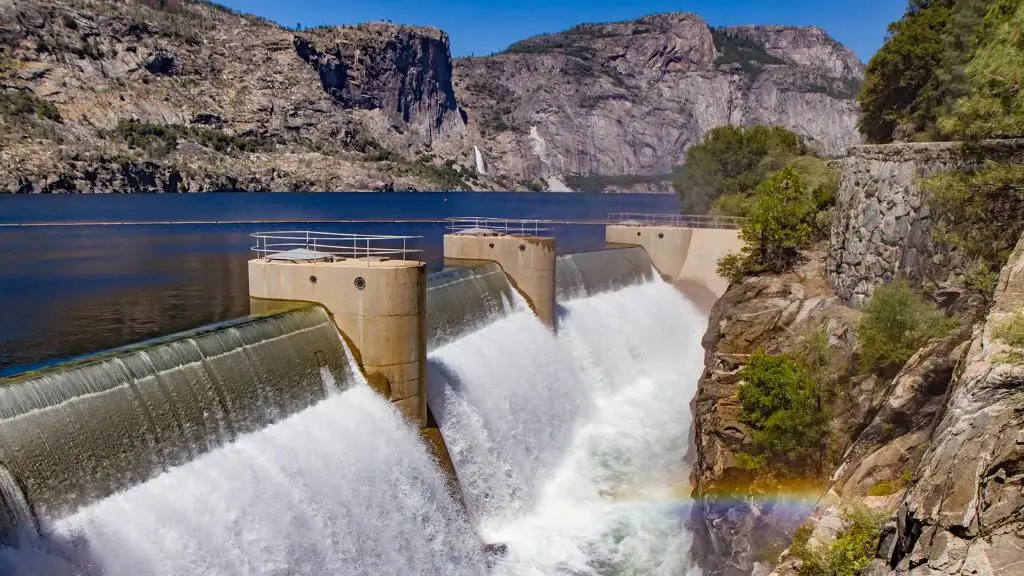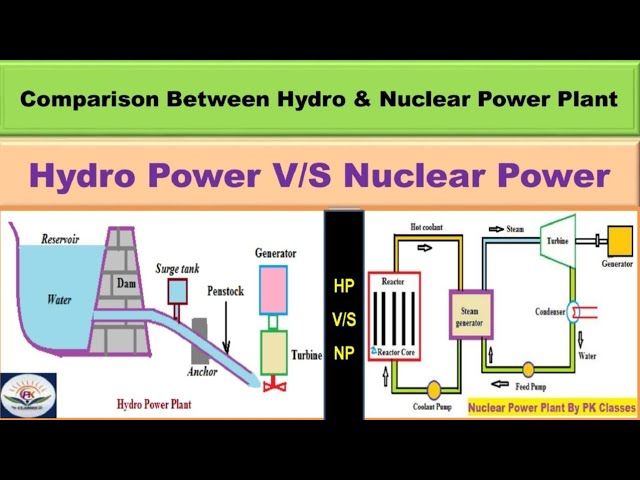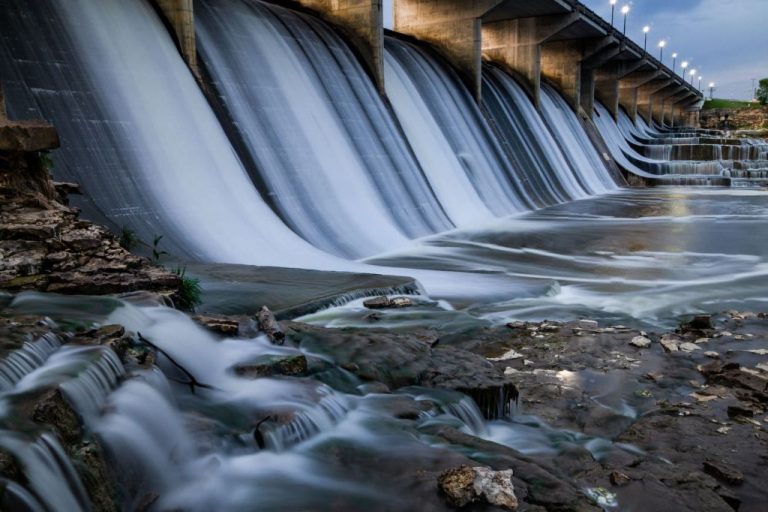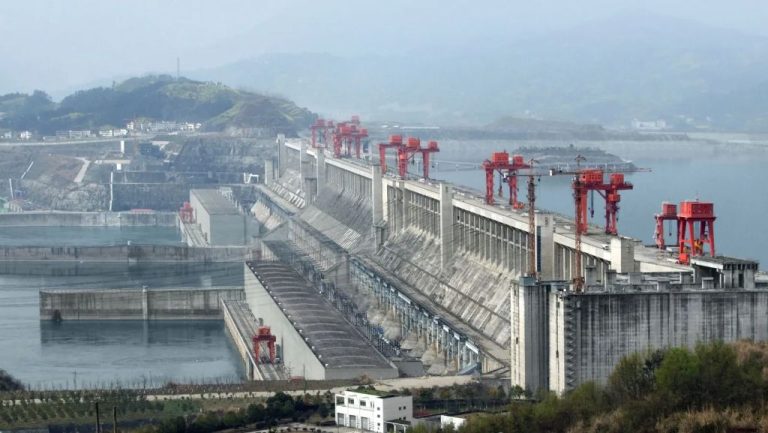Is Hydro Better Than Coal?
Hydroelectric and coal power are two major sources of energy across the world. Hydroelectric power utilizes the energy from flowing water to generate electricity while coal power burns coal to heat water, producing steam that drives turbines connected to electrical generators. The aim of this article is to compare hydroelectric and coal power across several factors, including environmental impact, cost, reliability, and growth potential. By analyzing the pros and cons of each energy source, we can better understand the advantages and disadvantages of hydroelectric versus coal power.
How Hydroelectric Power Works
Hydroelectric power utilizes dams to control the flow of water and use this kinetic energy to turn turbines that generate electricity. The dams help regulate and direct the water flow through pipes called penstocks. The rushing water spins the turbines that power a generator to produce electricity, which is then fed into the electrical grid to supply homes and businesses with power.
Hydroelectric power is considered renewable energy because it relies on the water cycle, which is continuously replenished through evaporation and precipitation. Unlike fossil fuels which take millions of years to form, the water cycle repeats endlessly, allowing hydropower to provide a sustainable source of renewable energy (Department of Energy).
How Coal Power Works
Coal-fired power plants generate electricity through combustion. Coal is burned in a boiler, where it heats water to produce high-pressure steam. This steam flows into a turbine and spins large blades attached to a shaft. As the shaft spins, it turns the rotor of an electric generator to produce electricity.
Coal is a fossil fuel formed from the remains of ancient vegetation that was compressed under layers of rock over millions of years. It is primarily composed of carbon along with variable amounts of other elements like hydrogen, sulfur, oxygen, and nitrogen. Coal is a finite, non-renewable resource. There is a limited global supply that cannot be replenished once it is used up.
According to the U.S. Energy Information Administration, coal fueled about 20% of U.S. electricity generation in 2019. However, coal-fired power plants produce large amounts of carbon dioxide emissions that contribute to climate change. Many countries are transitioning away from coal power due to environmental concerns over its continued use.
Environmental Impact

Hydroelectric power has a lower environmental impact compared to coal power in terms of greenhouse gas emissions. According to the U.S. Department of Energy, hydropower plants do not emit air pollutants, while coal power plants emit significant amounts of carbon dioxide, sulfur dioxide, and nitrogen oxides (1). Hydropower reservoirs can produce methane emissions from decomposing organic matter, but these levels are much lower than methane emissions from natural gas power plants and tend to decrease over time (2).
However, hydropower facilities can impact local wildlife and ecosystems. Damming rivers to create reservoirs often destroys or alters natural habitats, affecting biodiversity. For example, salmon migration can be disrupted by dams blocking access to spawning grounds (1). Hydropower projects may also change the temperature and oxygen levels of water downstream. But newer technologies and fish passages can help minimize some of these ecological effects (2).
In terms of land usage, hydroelectric dams require flooding large areas which can displace human populations and forests. Coal mining also disturbs significant amounts of land through mountaintop removal practices (3). Overall, hydropower has a lower carbon footprint but can still negatively impact local environments. Proper siting, design, and mitigation measures are necessary to reduce ecological effects.
Sources:
(1) https://www.iwr.usace.army.mil/Missions/Value-to-the-Nation/Hydropower/Hydropower-Environmental-Benefits/
(2) https://www.mdpi.com/2073-4441/13/10/1387
(3) https://grist.org/article/why-some-hydropower-plants-are-worse-for-the-climate-than-coal/
Reliability
When it comes to reliability, both hydroelectric and coal power have advantages and disadvantages. Hydroelectric power is highly dependent on water supply, making it susceptible to droughts and seasonal variations in precipitation. During dry years or seasons, hydroelectric dams may not have enough water flow to meet electricity demands (1).
Coal power, while not directly dependent on weather patterns, can experience supply chain disruptions that impact reliability. Transporting coal via rail networks from mines to power plants requires consistent infrastructure maintenance. Coal stockpiles at power plants also need to be sufficiently high to keep plants operating during disruptions (2).
Overall, hydroelectric power’s output can fluctuate more than coal based on environmental factors. But coal power also faces reliability challenges in terms of steady fuel supply. Both energy sources require careful planning and adaptable infrastructure to maximize reliability.
(1) https://kiwienergy.us/pros-and-cons-of-hydroelectric-energy/
(2) https://www.linkedin.com/pulse/myth-coal-reliability-alexander-hogeveen-rutter
Safety
When looking at safety, both hydroelectric power and coal power carry risks. However, the data shows that coal power has led to more deaths and injuries over time.
Coal mining is one of the most dangerous professions, leading to thousands of deaths each year globally. According to Our World In Data, the death rate for coal miners in China is 19.1 deaths per TWh of electricity production 1. Coal mining accidents are also common, such as collapsing mines and explosions. Transporting coal via rail, truck and barge also leads to some fatalities each year.
In contrast, large-scale hydroelectric dams have a relatively low death rate, estimated at 0.10 deaths per TWh by Our World In Data1. However, dam failures can be catastrophic, with some of the largest failures resulting in thousands of deaths. Though such massive failures are rare, smaller dam failures that lead to flooding and destruction still occur periodically. Proper regulation, maintenance and monitoring can help minimize hydroelectric dam risks.
Overall, coal power appears to be more inherently dangerous on an ongoing basis, whereas hydroelectric can be reasonably safe if proper safeguards are in place.
Cost
According to Projected Costs of Generating Electricity 2020 – Analysis, the levelized cost of electricity generation from hydropower is typically 2–8 U.S. cents per kilowatt-hour (kWh), making it a very cost competitive energy source. The levelized cost for coal power is much higher, ranging from 5-17 U.S. cents/kWh. This analysis considers capital costs over the lifetime of the plant as well as government subsidies.
A study by the U.S. Energy Information Administration found the average levelized capital cost per MWh for hydroelectric plants entering service in 2023 is $2,338, versus $3,573 for coal plants. This accounts for all capital, operating, and maintenance costs over the lifetime of the plant.
While coal plants are inexpensive to construct, fuel and operating costs are much higher compared to hydroelectric. Government subsidies also favor renewable energy sources like hydro in many countries, helping offset higher upfront construction costs.
Public Opinion
Recent polls show that the majority of Americans support transitioning away from fossil fuels like coal to renewable energy sources like hydroelectric power. A Pew Research Center survey from June 2023 found that 63% of U.S. adults say developing alternative energy sources like wind and solar should be a higher priority than expanding production of oil, coal and natural gas (Pew Research Center, 2023). However, there are partisan divides – 81% of Democrats prioritize alternative energy development compared to 42% of Republicans (Pew Research Center, 2023).
When asked specifically about coal, surveys indicate that most Americans want to reduce reliance on this fossil fuel. A 2021 Gallup poll found that 66% of Americans favor emphasizing alternative energy production compared to just 30% who favor emphasizing oil, gas and coal production (Gallup, 2021). Concerns about pollution and climate change are driving factors behind public support for transitioning to cleaner energy sources like hydroelectric.
Growth Potential
When looking at the future growth potential of hydroelectric power versus coal power, hydroelectric has a clear advantage due to untapped hydro resources compared to finite coal supplies. Coal Vs Hydro – 819 Words notes that while coal is a finite resource that will eventually run out, “hydropower relies on the water cycle, which is constantly renewed by the sun, making it a stable long-term energy source.” While only 22% of the world’s feasible hydroelectric potential has been utilized so far, coal is a non-renewable resource that is being depleted much more rapidly. Countries with untapped hydro resources still have an opportunity to expand clean hydroelectric power generation. In contrast, coal supplies are clearly finite and will decline over time as reserves are exhausted. This gives hydroelectric power much greater potential for long-term growth.
Conclusion
In comparing hydroelectric and coal power, there are several key takeaways:
– Hydroelectric power is a renewable resource that relies on the water cycle, while coal is a finite fossil fuel that will eventually run out. This gives hydroelectric power more potential for long-term, sustainable growth.
– From an environmental standpoint, hydroelectric emits virtually no greenhouse gases or air pollutants, while burning coal contributes significantly to climate change, smog, and acid rain. Hydroelectric has a much smaller ecological footprint.
– Hydro facilities have a longer typical lifespan than coal plants. They also require less maintenance and have lower operating costs per kilowatt-hour generated.
– While coal has a slight edge in reliability due to the ability to stockpile fuel reserves, hydro’s capacity factor and availability are comparable or slightly higher. Hydro reservoirs provide storage capabilities that aid system reliability.
– Safety-wise, hydroelectric production results in far fewer occupational hazards and accidental deaths compared to coal mining and transportation. Coal ash spills can also contaminate waterways.
– Public opinion polls show stronger support for hydroelectricity over coal power due to its clean, renewable nature and minimal environmental impacts. However, large hydro projects can be controversial locally.
– Overall, from a sustainability and environmental standpoint, hydroelectric power has more benefits than coal. But coal may retain cost advantages in some regions, and hydro resources are geographically limited. The optimal energy mix likely involves continued progress in transitioning from coal to cleaner renewables like hydroelectric where feasible.






